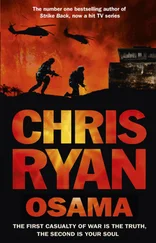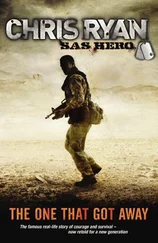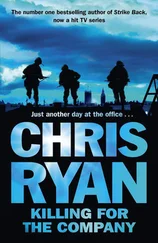He looked a little further down the residential street in which his car was parked. The vehicle he had targeted was on the other side of the road about twenty metres down. He couldn’t see it in the darkness, but as the sky gradually started to move from black to steely grey, the vehicle came into his field of vision. Only two nights previously, in the small hours of the morning, he had broken into it with some ease. It had taken only a few minutes to remove the panel below the steering wheel, attach the device – no bigger than the smallest mobile phone – and walk briskly away, though not before locking the car carefully once again.
It was pathetically easy to kill people sometimes.
He looked at his watch. A quarter-past five. In one hour and thirty minutes, the door of the house outside which the vehicle was parked would open. A louche youngster in his mid-twenties would walk out, approach the car and slouch into the driver’s seat. Until then, he just had to wait. He would have liked to listen to something – there was a cassette of sacred choral music slotted into the dashboard – but if he did that he risked attracting attention. So he just sat there in silence.
A quarter to seven. The house door opened and a figure appeared. He wore sunglasses, quite unnecessarily, and a T-shirt with the logo of a pop group that the man didn’t recognise. No doubt his target’s musical tastes were buried somewhere in the details that had been supplied to him – the man’s employers were extraordinarily thorough – but he had not retained them. It wasn’t necessary for what was to happen today.
The car – an old silver Ford with shiny alloy wheels and certain other modifications intended to make it look like a much more desirable object than it actually was – pulled out into the road. The man didn’t follow. Not yet. Instead, he switched on a small visual display unit that was gummed to the front windscreen. It looked like a satellite navigation unit; indeed that’s what it was. It just wasn’t the kind that anyone could buy in the high street.
A map appeared, and on it two green dots. One did not move. The other, which was flashing, did. At the side of the screen a digital display showed some constantly changing numbers: the other car’s increasing speed. The man waited for the vehicle in the road to disappear from sight. And then he followed, using the tracking screen to stay behind his target, but at a distance.
He knew where the young man was likely to go, of course. On to the motorway and then north towards the service station where he had worked for precisely seven months and two weeks. His take-home pay was £180 a week, £130 of which was spent on rent. He bought his food from the local Tesco – the cheapest brands of everything except, it seemed, cigarettes. No doubt he found the extra money – the retainer, paid into his bank account anonymously – immensely useful. However, as was so often the way with these people, he squandered it on trinkets for his car, expensive evenings in nightclubs and, more than once, prostitutes. Whether his target had ever been activated, the man didn’t know. That was information which was neither useful to him, nor supplied.
He drove slowly. Safely. If his target forged too far ahead he didn’t worry. It was not his intention to stay close, after all. At least, not just yet. The early morning traffic had not built up and it didn’t take long for the flashing green light on his screen to reach the blue map line that indicated the motorway. As soon as it did, the speed indicator started to blur. In the space of about ten seconds, it went from a steady 35 mph into the decidedly unsteady nineties.
The man’s own car stayed well within the speed limit. Even when he himself reached the motorway he stayed in the slow lane at under 50 mph, allowing more impatient drivers to overtake him.
On the passenger seat lay a little black box. Had a child seen it, they might have thought it was the control unit for a radio-controlled car. In fact it wasn’t far off. Keeping one hand on the steering wheel, the man stretched out the other one and picked it up. He glanced back at the screen: his target’s car was doing nearly 100 mph now. That would be just right. He flicked his thumb on to the switch; it moved with very little resistance. Then he carefully put the unit back on the passenger seat, his free hand back on the steering wheel, and continued his slow, steady journey.
The green light continued to flicker. That was as it should be. The man pictured what was happening inside his target’s car. The steering column would have been disabled, as would the brakes, and at that precise moment the driver would be struggling with the newfound realisation that he was unable to control his car.
The man watched the screen intently. Ten seconds passed.
Fifteen.
And then, without so much as a blip, the green light disappeared.
He smiled. About two miles, he calculated, between himself and the place where the accident had happened. In about a minute the traffic would start slowing, almost to a standstill. He had no desire to get caught up in that, so when he saw an exit signposted up ahead, he switched on his indicators and prepared to leave the motorway.
The traffic started to slow. By the time he bore left it was grinding to a halt. He drove his car up the slip road at the top of which there was a roundabout, one exit of which led to a bridge passing back over the motorway. He took that exit, and as he passed over the road he looked out to his left. There, scattered across the motorway, was the result of his morning’s work.
He continued to drive, but as soon as he could he pulled off the main road and into a lay-by before leaving the car and walking back to the bridge. It was a weakness, he knew, something he really ought to master; but he couldn’t resist examining exactly what he had achieved. He stood at the side of the bridge, peering through his square glasses onto the devastation below.
There were three cars involved in the crash, as far as he could tell. It was difficult to determine exactly, because they no longer resembled cars so much as smouldering chunks of scrap metal. He ran through the crash in his mind. The car would have slammed directly into the back of the other two motors; he imagined the target jolting forward in his seat at the moment of impact, the sudden jerk of the neck and then the contorted metal of the second car’s chassis plunging through the windshield and driving through the skull. He could see something shiny, red and sticky, lying on the road. Lumps of brain matter, perhaps, or the bowels of one of the other victims. A few members of the public had left their own cars and were approaching the wreckage. It was clear, though, that there was nothing they could do. It was clear that the occupants of all three cars would be dead. So much the better. If anything was likely to dilute people’s attention away from one death, it was the occurrence of several others at the same time.
He imagined what the eye witnesses would have to say. The nutter in the Ford was driving like a lunatic. A hundred miles an hour, easy. It was his fault. Stupid bloody idiot.
Everything had gone very well. He could return home now knowing that his job had been successful. The man allowed himself a brief smile as he wandered back to his own car, put the key in the ignition and, unnoticed by anyone or anything, drove smoothly away.
*
Sam didn’t know where he was. A corridor. Cement walls. There was nobody else around. He was on his own. It was dark. He could only see because of the NV, which cast a sinister greenish hue all around. There was a weapon in his fist. A submachine gun. Heckler & Koch, MP5 – he could tell from the view through the weapon’s aperture sight as he stealthily continued down the corridor.
Читать дальше












